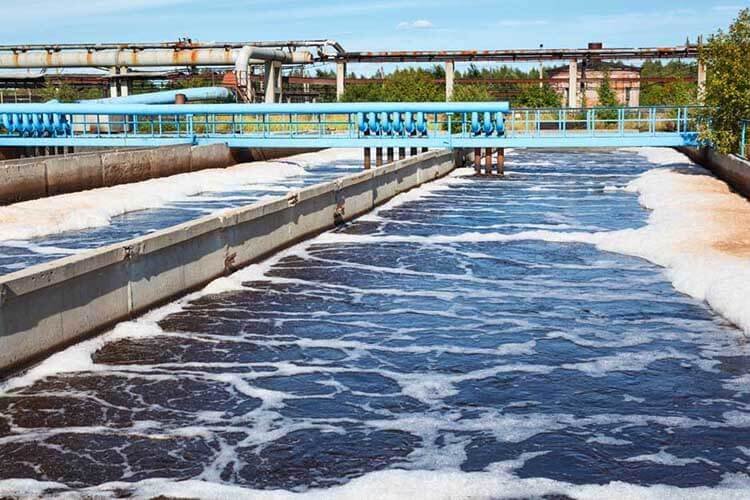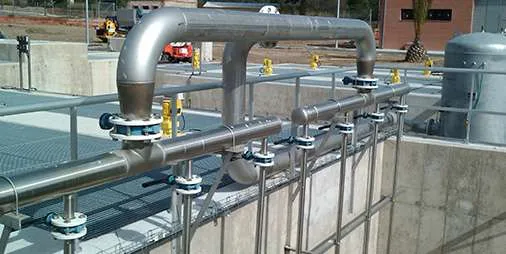
Sodium Hypochlorite Dosing In Water Treatment
Sodium Hypochlorite Dosing in Water Treatment: An In-Depth Guide
Water treatment is a critical process aimed at making water safe for consumption and various industrial applications. Among the many disinfectants used in water treatment, sodium hypochlorite (NaOCl) stands out for its efficacy, ease of use, and cost-effectiveness. This article provides a comprehensive overview of sodium hypochlorite dosing in water treatment, covering its chemistry, applications, advantages, challenges, and best practices.
Understanding Sodium Hypochlorite
Chemical Properties and Production
Sodium hypochlorite is a chemical compound derived from the reaction of chlorine gas with sodium hydroxide. The chemical formula NaOCl indicates its key components: sodium (Na), oxygen (O), and chlorine (Cl). It is a pale greenish-yellow liquid with a characteristic odor and is commonly produced in two primary forms:
-
- Liquid Sodium Hypochlorite: Typical concentrations range from 5% to 15% available chlorine. It is widely used in various applications, including water treatment, sanitation, and disinfection.
-
- Sodium Hypochlorite Tablets: These are solid forms of sodium hypochlorite designed for controlled release in water systems.
Mechanism of Action
Sodium hypochlorite is an effective disinfectant due to its ability to release free chlorine when dissolved in water. This free chlorine reacts with organic materials and pathogens by oxidizing their cellular structures, ultimately leading to their inactivation or death. The effectiveness of sodium hypochlorite is influenced by factors such as pH, temperature, and the presence of competing substances in the water.
Chlorine Chemistry in Water Treatment
Sodium hypochlorite dissociates in water to form hypochlorous acid (HOCl) and hydrochloric acid (HCl), explaining its high disinfecting power. The equilibrium between HOCl and its ionized form, hypochlorite ion (OCl⁻), is pH-dependent:
[ \text{HOCl} \rightleftharpoons \text{H}^+ + \text{OCl}^- ]
At lower pH levels (around 6.5), HOCl predominates, providing superior antimicrobial effects. As the pH rises above 8.5, the efficiency of disinfection decreases since the hypochlorite ion becomes dominant, which is less effective as a biocide.
Applications of Sodium Hypochlorite in Water Treatment
Drinking Water Treatment
Sodium hypochlorite is widely used in the disinfection of drinking water. It effectively kills bacteria, viruses, and protozoa, reducing the incidence of waterborne diseases. The required dosage of sodium hypochlorite for drinking water treatment depends on several factors, including:
-
- Water Quality: Higher levels of turbidity and organic matter may require higher doses of NaOCl to achieve effective disinfection.
-
- Target Microorganisms: Specific pathogens might necessitate higher doses due to their resilience.
-
- Contact Time: Sufficient contact time must be allowed for effective disinfection.
Typically, the dosage for drinking water ranges from 1 to 5 mg/L of free chlorine before the water is distributed to consumers.
Wastewater Treatment
Sodium hypochlorite is also used in the treatment and disinfection of wastewater. In wastewater applications, it is essential to control the dosing to minimize the formation of disinfection byproducts (DBPs) and avoid detrimental environmental effects.
In wastewater treatment plants, the process involves:
-
- Pre-treatment: Removal of solids and organic matter to enhance disinfection performance.
-
- Chlorination: Adding sodium hypochlorite to achieve the desired residual concentration of free chlorine.
-
- Dechlorination: Post-disinfection, residual chlorine may be neutralized using sodium bisulfite or other agents before release into the environment.
Industrial and Recreational Water Use
Sodium hypochlorite finds application in various industries, including food processing, pharmaceuticals, and cosmetics, where water quality is crucial. In recreational water facilities, such as swimming pools, NaOCl is often used to maintain safe and hygienic water conditions. Dosages in these scenarios can vary widely based on the water volume and the level of bather load.
Advantages of Using Sodium Hypochlorite
Sodium hypochlorite offers several distinct advantages for water treatment applications:
1. Effective Disinfection
As a strong oxidizing agent, sodium hypochlorite effectively kills a broad spectrum of pathogens, including bacteria, viruses, and protozoa. This efficacy is critical for safeguarding public health.
2. Ease of Handling and Application
Liquid sodium hypochlorite can be easily transported and stored in bulk, making it convenient for water treatment facilities. Furthermore, dosing systems can be automated for precise control.
3. Rapid Action
Sodium hypochlorite acts quickly, ensuring rapid disinfection, which is vital for scenarios where immediate results are necessary.
4. Cost-Effectiveness
Compared to other disinfection methods, sodium hypochlorite is relatively low-cost. This financial benefit is particularly valuable for large-scale treatment plants and municipalities dealing with limited budgets.
5. No Residual Taste
Unlike chlorinated hydrocarbons, sodium hypochlorite does not leave a noticeable taste or odor in treated water, which is a key consideration for drinking water applications.
6. Environmentally Friendly Disinfectant
When properly managed, sodium hypochlorite can be an environmentally friendly option. It decomposes into harmless compounds, reducing the risk of long-term environmental impacts.
Challenges and Considerations
While sodium hypochlorite presents many benefits, there are also challenges and considerations when using it in water treatment:
1. Formation of Disinfection Byproducts (DBPs)
The chlorination of organic materials can lead to the formation of harmful disinfection byproducts, such as trihalomethanes (THMs) and haloacetic acids (HAAs). Regulatory bodies set limits on these compounds, necessitating careful monitoring of dosing protocols.
2. pH Sensitivity
The effectiveness of sodium hypochlorite diminishes at higher pH levels. This sensitivity requires regular monitoring and adjustments of water pH to maintain optimal disinfection conditions.
3. Corrosive Properties
Sodium hypochlorite is corrosive, which can lead to wear and tear on equipment, pipelines, and storage tanks. This consideration mandates the use of suitable materials to manage sodium hypochlorite safely.
4. Stability and Shelf Life
Sodium hypochlorite solutions can degrade over time, particularly when exposed to heat, light, and contaminants. Maintaining appropriate storage conditions is essential for preserving the chemical’s effectiveness.
5. Safety Hazards
Though sodium hypochlorite is effective, it can pose safety hazards if not handled properly. Exposure to concentrated NaOCl solutions can lead to chemical burns or respiratory issues. Proper personal protective equipment (PPE) and training are critical for workers handling it.
Optimal Dosing Strategies
To achieve the best outcomes in water treatment with sodium hypochlorite, proper dosing strategies must be employed. Here are some key guidelines:
1. Monitoring Water Quality
Before dosing, water quality parameters such as turbidity, organic load, and contaminant types should be assessed. This information helps determine the initial dosage required for effective disinfection. Regular monitoring of water quality is essential to adapt dosing according to variations in water composition.
2. Establishing Target Residual Free Chlorine Levels
Establishing a target residual free chlorine level is crucial for ensuring continuous disinfection. The American Water Works Association (AWWA) recommends maintaining a residual concentration of 0.2 to 4 mg/L for drinking water, depending on specific circumstances.
3. Using Automated Dosing Systems
Automation can enhance accuracy and consistency in sodium hypochlorite dosing. Programmable dosing pumps enable real-time adjustments based on water quality changes, seasonal variations, and demand fluctuations.
4. Conducting Contact Time Assessments
Disinfection is influenced by contact time; therefore, assessing and ensuring appropriate contact time is critical for achieving desired disinfection outcomes. This is particularly important in larger water treatment systems.
5. Regularly Testing for Free Chlorine Residual
Routine testing for free chlorine residual levels in treated water is essential to ensure target disinfection levels are met. This can be done using colorimetric tests, titration methods, or digital testers.
6. Training Personnel
Training environmental and water treatment personnel on sodium hypochlorite safe handling, dosing, and monitoring is essential. This training should include understanding the hazards associated with NaOCl, appropriate safety measures, and emergency response protocols.
Case Studies and Practical Applications
Case Study 1: Drinking Water Treatment Facility
In a mid-sized municipality, sodium hypochlorite was implemented as the primary disinfectant for their drinking water. A baseline evaluation showed a need for 2 mg/L of residual chlorine to meet health standards. After thorough monitoring and optimizing the dosing system, the facility achieved consistent disinfection while adhering to regulatory limits on DBPs.
Case Study 2: Wastewater Treatment Plant
A municipal wastewater treatment plant introduced sodium hypochlorite as part of its disinfection process. By integrating automated dosing systems, the facility effectively managed fluctuations in organic load, reducing chlorine use without compromising effluent quality. Regular testing for residual chlorine and DBPs ensured compliance with environmental regulations.
Future Trends in Sodium Hypochlorite Dosing
The landscape of water treatment continues to evolve, and sodium hypochlorite dosing practices are no exception. Several emerging trends indicate a move toward more efficient and sustainable water disinfection methods:
1. Advanced Automation and Monitoring
Smart water treatment technologies, integrating data analytics and real-time monitoring, promise to enhance sodium hypochlorite dosing accuracy and efficiency. These systems can evaluate numerous water quality factors simultaneously, optimizing chlorine dosing and minimizing waste.
2. Green Chemistry Alternatives
Research is ongoing into greener alternatives to traditional sodium hypochlorite, including using alternative oxidants or biological methods for disinfection. Innovations in chemistry may yield new agents that present fewer health risks and less environmental impact.
3. Enhanced Risk Assessments
As regulatory bodies continue to emphasize risk management in water treatment, more comprehensive assessments of water contaminants and DBPs are expected. The focus will remain on lowering adverse impacts while maintaining effective disinfection levels.
Conclusion
Sodium hypochlorite remains a cornerstone in modern water treatment due to its efficiency, versatility, and cost-effectiveness. Understanding its properties, applications, advantages, and challenges allows water treatment professionals to utilize this chemical effectively. By employing optimal dosing strategies, continuous monitoring, and developing innovative solutions, we can ensure that sodium hypochlorite will continue to play a vital role in safeguarding public health through clean and safe water.
With ongoing advancements in technology and a commitment to sustainability, sodium hypochlorite dosing practices will evolve, further enhancing its role in ensuring the health of our water supply for generations to come.


